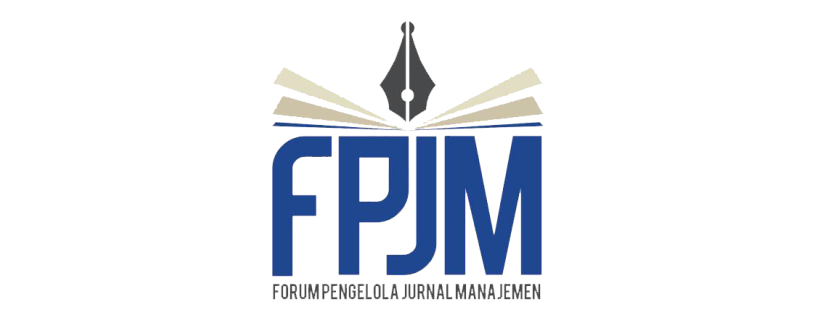Peran Kebijakan Pemerintah dalam Memperkuat Aliansi Strategis dan Meningkatkan Daya Saing Ekonomi Kreatif
DOI:
https://doi.org/10.26905/jmdk.v7i2.3830Keywords:
Competitive Advantage, Government Policy, Strategic AlliancesAbstract
This study aims :1) to examine the effect of strategic alliances and government policies on the achievement of competitive advantage of micro, small and medium creative enterprises, 2) to assess the role of government policies in moderating the relationship between strategic alliances and competitive advantage. This study was conducted in 130 micro, small and medium craft enterprises in Malang Raya. Using SEM-PLS in WarpPLS 6.0, this study finds that strategic alliances have significant effects on competitive advantage. Government policy does not moderates the relationship between strategic alliances and competitive advantage, but at the same time it serves as the driver of strategic alliances and the predictor of competitive advantage. Government policies have the highest loading factor, followed by strategic alliances. Thus, micro, small and medium enterprises in creative economy must focus on optimizing strategic alliances to greatly improve their competitive advantage. In addition, the government can driven strategic alliances while providing facilitation, support, and policies that encourage improvements in competitive advantage.
https://doi.org/10.26905/jmdk.v7i2.3830
Downloads
References
Amit, R., & Schoemaker, P. J. . H. (1993). Strategic Asset and Organizational Rent. Strategic Management Journal, 14(1), 33–46.
Barney, J. (1991). Firm Resources and Sustained Competitive Advantage. Journal of Management, 17(1), 99–120.
Bharadwaj, S. G., Varadarajan, P. R., & Fahy, J. (1993). Competitive Advantage in Service Industries : A Conceptual Model. Journal of Marketing, 57(4), 83–99.
Bleeke, J., & Ernst, D. (1991). The way to win in cross-border alliances. Harvard Business Review, 69(6), 127–135.
Bridoux, F. (2004). A Resource-Based Approach to Performance and Competition: An Overview of The Connections between Resources and Competition.https://doi.org/10.1080/01418630008221972
Caves, R. E., & Ghemawat, P. (1992). Identifying Mobility Barrier. Strategic Management Journal, 13(1), 1–12.
Chen, Y. L., Shyh-B & Wen, Chao T, (2006) The Influence of Green Innovation Performance on Corporate Advantage in Taiwan, Journal of Business Ethic, 67:331-339
Chin, W. W. (1998). The partial least squares approach for structural equation modeling. In Methodology for Business and Management. Modern methods for business research. (pp. 295–336). Mahwah, US: Lawrence Erlbaum Associates Publishers
Cui, Y., & Jiao, H. (2011). Dynamic capabilities, strategic stakeholder alliances and sustainable competitive advantage: Evidence from China. Corporate Governance, 11(4), 386–398.
Dacin, M. T., Oliver, C., & Roy, J.-P. (2007). The Legitimacy of Strategic Alliances: An Institutional Perspective. Strategic Management Journal, 28(1), 169–187.
Dandago, K. ., & Usman, A. . (2011). Assesment of Governmant Industrialisation Policies on Promoting The Growth of Small Scale Industries In Nigeria. Phys. Rev. E, (November), 53.
Defee, C. C. (2006). Creating Competitive Advantage Using Non-Equity Strategic Alliances: A Small Company Perspective. Supply Chain Forum: An International Journal, 7(2), 44–57.
Denisi, A. S., Hitt, M. A., & Jackson, S. E. (1998). The Knowledge-Based Approach to Sustainable Competitive Advantage. In Managing knowledge for competitive advantage (pp. 3–34).
Dyer, J. H., Kale, P., & Singh, H. (2001). How to make strategic alliances work. MIT Sloan Management Review, 42(4), 37–43.
Dyer, J. H., & Singh, H. (1998). The Relational View: Cooperative Strategy and Sources of Interorganizational, Competitive Advantage. Academy of Management Review, 23(4), 660–679.
Eniola, A. A., & Entebang, H. (2015). Government Policy and Performance of Small and Medium Business Management. International Journal of Academic Research in Business and Social Sciences, 5(2), 237–248.
Grant, R. M. (1991). The Resource-Based Theory of Competitive Advantage: Implication for Strategy Formulation. California Management Review, (Spring 1991), 114–138.
Grant, R. M. (1996). Toward a knowledge-based view (KBV) theory. Strategic Management Journal, 17(Winter), 109–122.
Hamel, G., Doz, Y. L., & Prahalad, C. K. (1989). Collaborate with Your Competitors - and Win. Harvard Business Review, 67(1), 133–139.
Harash, E., Bin Yahya, S., Ries Ahmed, E., & Jasem Alsaad, F. (2013). Impact of Government policies in the Influence of Market practices on Financial Performance of small and medium enterprises (SMEs) in Iraq. Journal of Accounting and Business (JAB), 13(2).
Harvie, C., Narjoko, D., & Oum, S. (2010). Firm Characteristic Determinants of SME Participation in Production Networks. In ERIA Discussion Paper Series (Vol. 11).
Hitt, M. A., Hoskisson, R. E., & Kim, H. (1997). International diversification: Effects on innovation and firm performance in product-diversified firms. Academy of Management Journal, 40(4), 767–798.
Hitt, M. A., Ireland, R. D., Camp, S. M., & Sexton, D. L. (2001). Guest Editors ’ Introduction To The Special Issue Strategic Entrepreneurship : Entrepreneurial Strategies For Wealth Creation. Strategic Management Journal, 491, 479–491.
Hitt, M. a., Keats, B. W., & DeMarie, S. M. (1998). Navigating in the new competitive landscape: Building strategic flexibility and competitive advantage in the 21st century. Academy of Management Perspectives, 12(4), 22–42.
Ireland, R. D., Hitt, M. A., & Vaidyanath, D. (2002). Alliance Management As a Source of Competitive Advantage. Journal of Management, 28(9), 413–446.
Jasra, J. M., Khan, M. A., Hunjra, A. I., Ur Rchman, R. A., & Azam, R. I. (2011). Determinants of Business Success of Small and Medium Enterprises. International Journal of Business and Social Science, 2(20), 869–872.
Kang, K. N., & Park, H. (2012). Influence of government R&D support and inter-firm collaborations on innovation in Korean biotechnology SMEs. Technovation, 32(1), 68–78.
Kanter, R. (1994). Collaborative advantage: the art of alliances. Harvard Business Review, 72(4), 96–108.
Le, N. T. B., & Nguyen, T. V. (2009). The impact of networking on bank financing: The case of small and medium-sized enterprises in Vietnam. Entrepreneurship: Theory and Practice, 33(4), 867–887.
Lei, D., Slocum, J. W., & Pitts, R. A. (1997). Building cooperative advantage: Managing strategic alliances to promote organizational learning. Journal of World Business, 32(3), 203–223.
Lynch, R. P. (1990). Building Alliances to Penetrate European Markets. Journal of Business Strategy, 11(2), 4–8.
Madhok, A., & Tallman, S. B. (1998). Resources, Transactions and Rents: Managing Value Through Interfirm Collaborative Relationships. Organization Science : pp. 326–339. Hanover, Md: INFORMS.
Mehta, R., Larsen, T., Rosenbloom, B., & Ganitsky, J. (2006). The impact of cultural differences in U . S . business-to-business export marketing channel strategic alliances. Industrial Marketing Management, 35, 156–165.
Monczka, R. M., Petersen, K. J., Handfield, R. B., & Ragatz, G. L. (1998). Success Factors in Strategic Supplier Alliances: The Buying Company Perspective. Decision Sciences, 29(3), 553–577.
Morgan, R. M., & Hunt, S. D. (1994). The Commitment Trust Theory of Relationship Marketing. Journal of Marketing, 58, 20–38.
Muthusamy, S. K., White, M. A., & Carr, A. (2007). An Empirical Examination of the Role of Social Exchanges in Alliance Performance. Journal of Managerial Issues, 19(1), 53–75.
Ohmae, K. (1986). Becoming a Triad Power : The New Global Corporation. International Marketing Review, 3(3), 7–20.
Okpara, J. O. (2011). Factors constraining the growth and survival of SMEs in Nigeria: Implications for poverty alleviation. Management Research Review, 34(2), 156–171.
Palakshappa, N., & Gordon, M. E. (2007). Collaborative Business Relationships: Helping Firms to Acquire Skills and Economies to Prosper. Journal of Small Business and Enterprise Development, 14(2), 264–279.
Park, S. H., & Ungson, G. R. (2001). Interfirm Rivalry and Managerial Complexity: A Conceptual Framework of Alliance Failure. Organization Science, 12(1), 37–53.
Penrose, E.(1959). The Theory of the Growth of the Firm. London, UK: Basil Blackwell and Mott.
Peteraf, M. A. (1993). The Cornerstoners of Competitive Advantage: A Resource-Based View. Strategic Management Journal, 14, 179–191.
Porter, M. E. (1980). Competitive Strategy: Techniques for Analyzing Industries and Competitors. The Free Press, New York.
Porter, M. E. (1991). Towards a dynamic theory of strategy. Strategic Management Journal, 12, 95–117.
Prahalad, C. K., & Hamel, G. (1990). The Core Competence of the Corporation. Harvard Business Review, may-june, 1–17.
Salman, D. (2010). Rethinking of Cities, Culture and Tourism within a Creative Perspective. Revista de Turismo Y Patrimonio Cultural, 8(3).
Sathe, S., & Handley-Scharchler, M. (2006). Social and cultural factors in FDI flows : evidence from the Indian states. World Review of Entrepreneurship, Management and Sust. Development, 2(4), 323–334.
Saxton, T. (1997). The Effects of Partner and Relationship Characteristics on Alliance Outcomes. Academy of Management Journal, 40(2), 443–461.
Shariff, M. N. M., Peou, C., & Ali, J. (2010). Moderating Effect of Government Policy on Entrepreneurship and Growth Performance of Small-Medium Enterprises in Cambodia. International Journal of Business and Management Science, 3(1), 57–72.
Street, C. T., & Cameron, A. F. (2007). External relationships and the small business: A review of small business alliance and network research. Journal of Small Business Management, 45(2), 239–266.
Teece, D. J., Pisano, G., & Shuen, A. (1997). Dynamic Capabilites and Strategic Management. Strategic Management Journal, 18(7), 509–533.
Teng, B. S. (2007). Corporate entrepreneurship activities through strategic alliances: A resource-based approach toward competitive advantage. Journal of Management Studies, 44(1), 119–142.
Treacy, M., & Wiersema, F. (1993). Customer intimacy and other value disciplines. Harvard Business Review VO - 71, (1), 84.
Varadarajan, P. R., & Cunningham, M. (1995). Strategic Alliances: A Synthesis of Conceptual Foundations. Journal of the Academy of Marketing Science, 23(24), 282–296.
Vyas, N. M., Shelburn, W. L., & Rogers, D. C. (1995). An analysis of strategic alliances: Forms, functions and framework. Journal of Business & Industrial Marketing, 10(3), 47–60.
Wernerfelt, B. (1984). A resource-based view of the firm. Strategic Management Journal, 5(2), 171–180.
Zineldin, M., & Dodourova, M. (2006). Motivation, achievements and failure of strategic alliances: The case of Swedish auto-manufacturers in Russia. European Business Review, 17(5), 460–470.
Downloads
Published
Issue
Section
License
Authors who publish with this journal agree to the following terms:
(1)Â Copyright of the published articles will be transferred to the journal as the publisher of the manuscripts. Therefore, the author confirms that the copyright has been managed by the journal.
(2) Publisher of Jurnal Penelitian is University of Merdeka Malang.
(3) The copyright follows Creative Commons Attribution–ShareAlike License (CC BY SA): This license allows to Share — copy and redistribute the material in any medium or format, Adapt — remix, transform, and build upon the material, for any purpose, even commercially.












